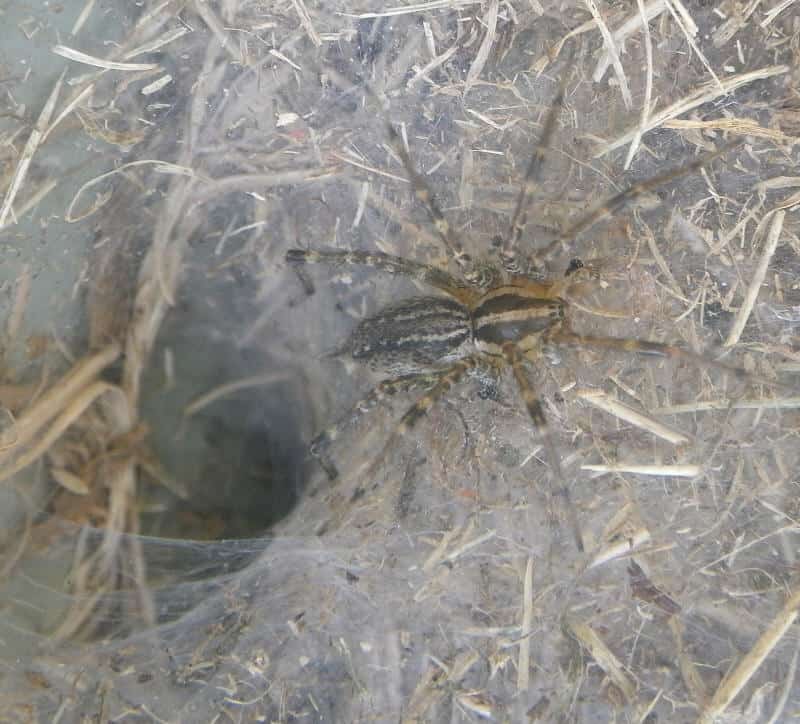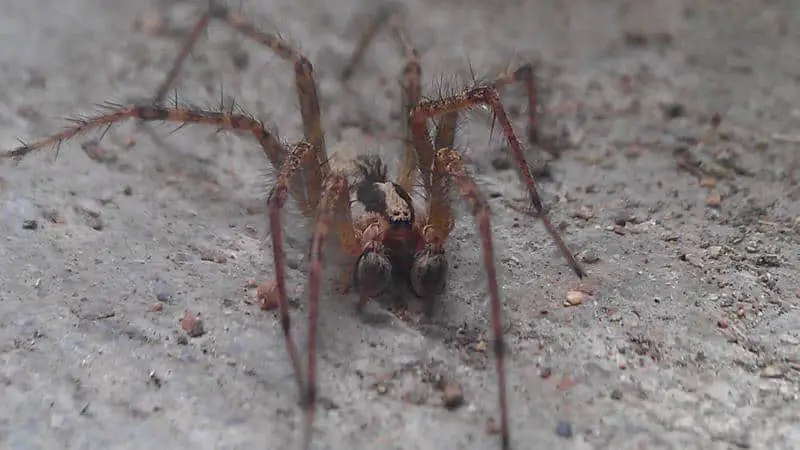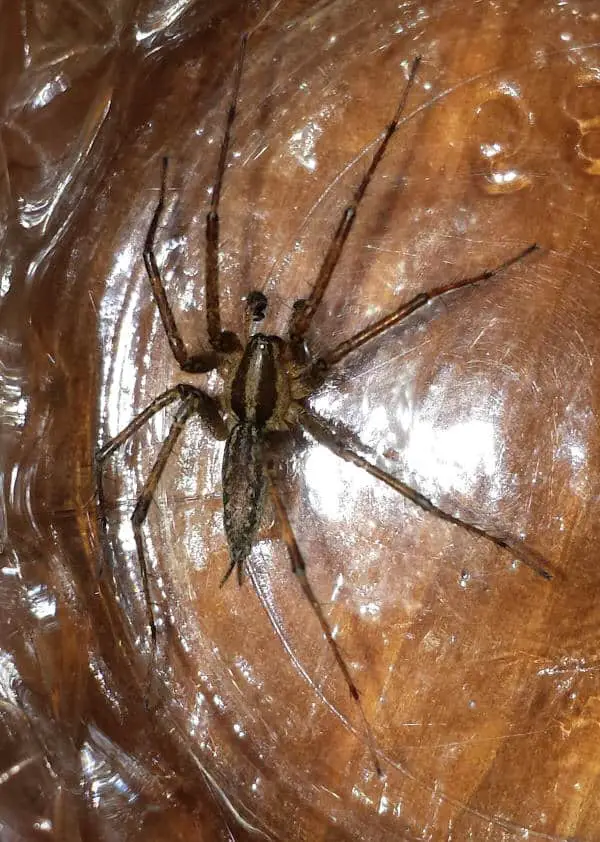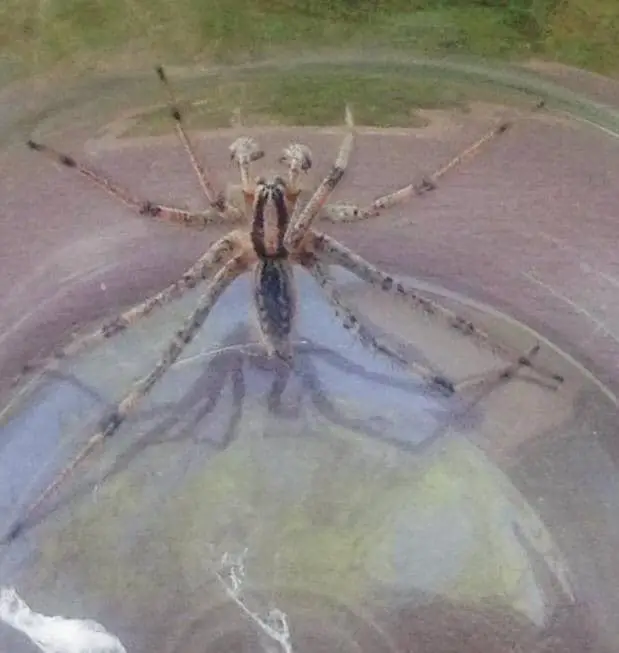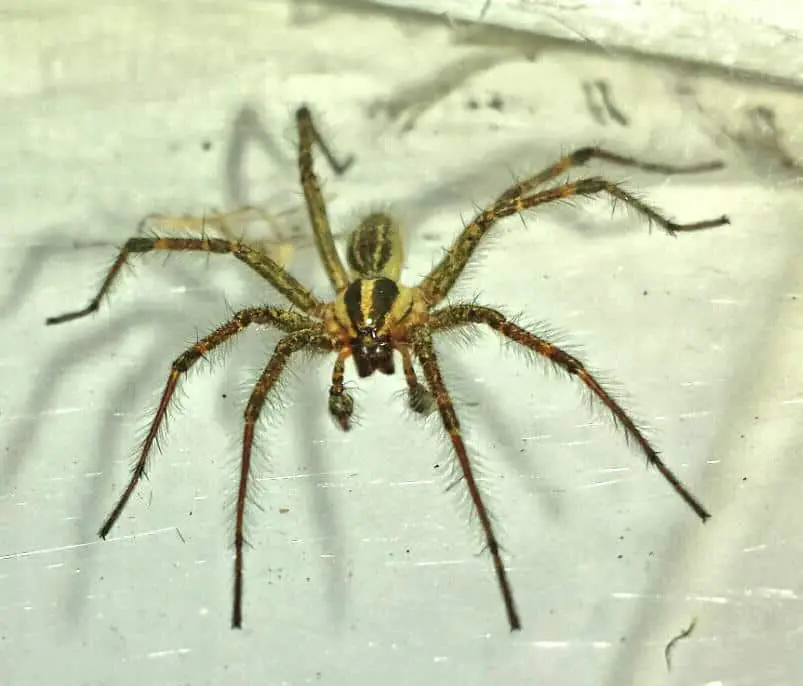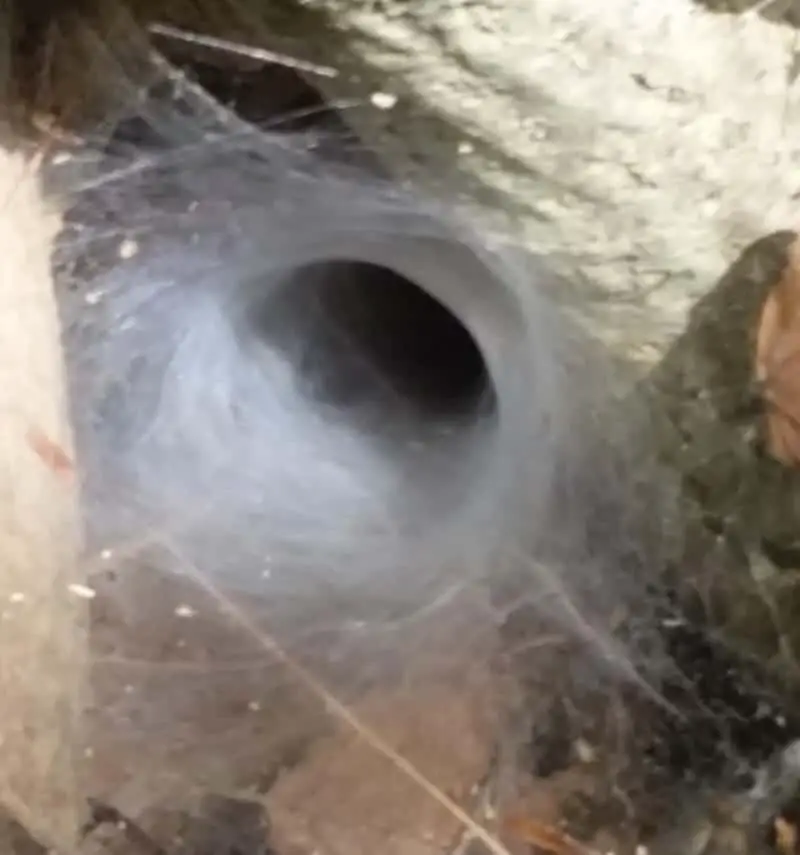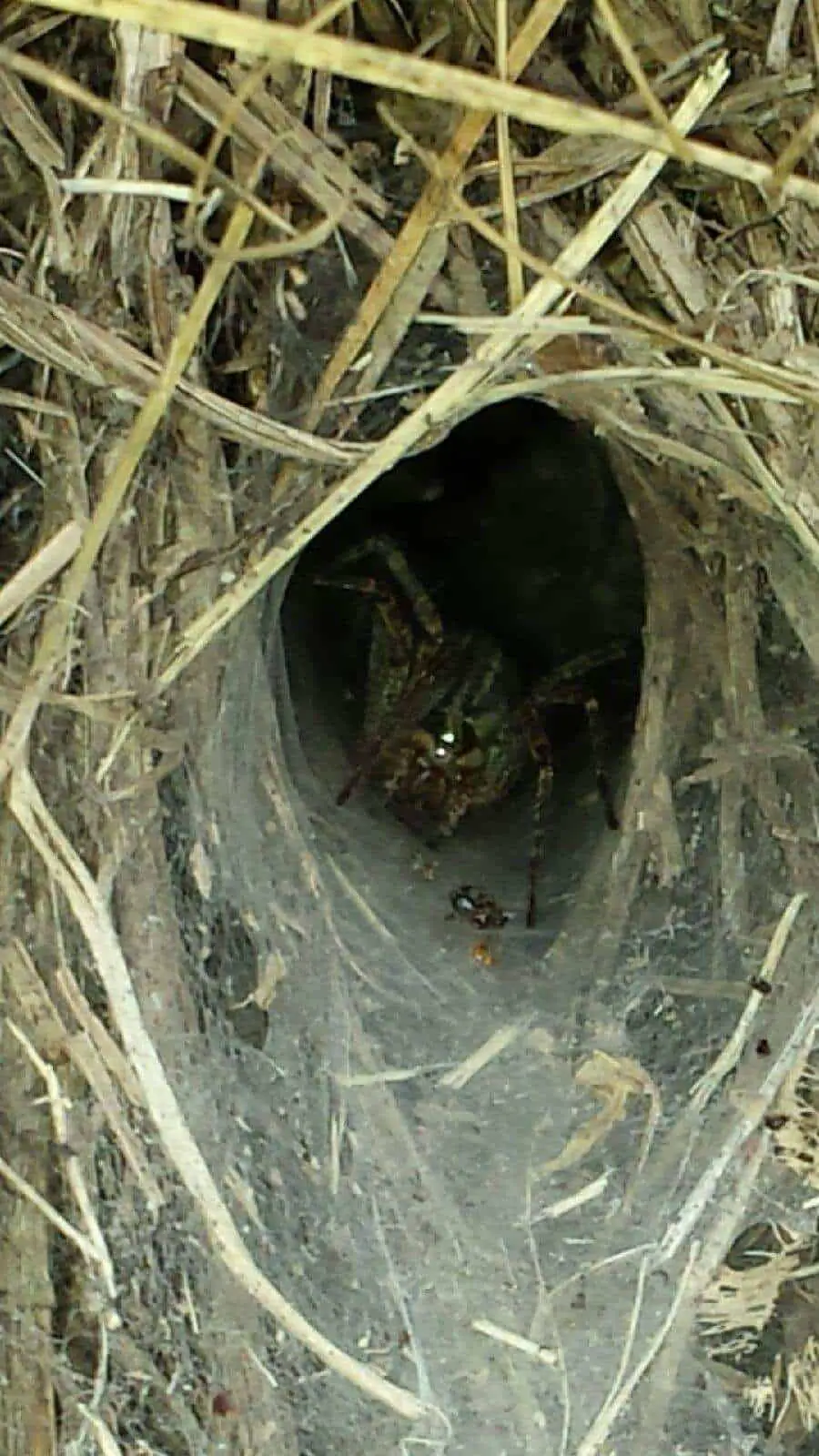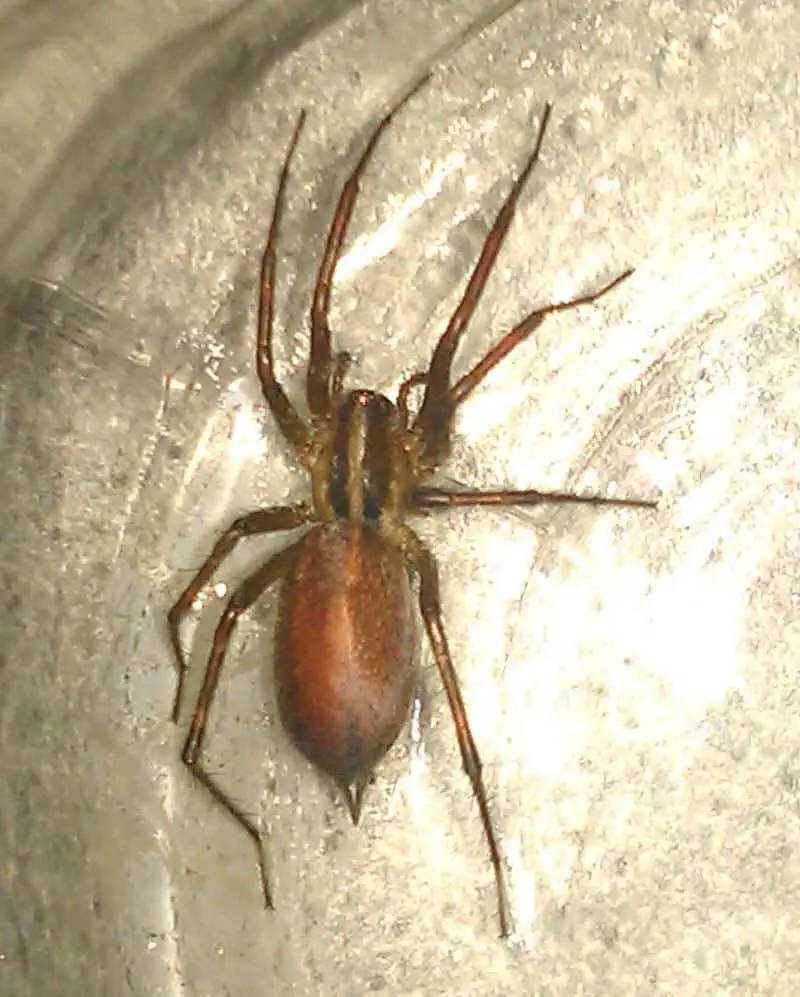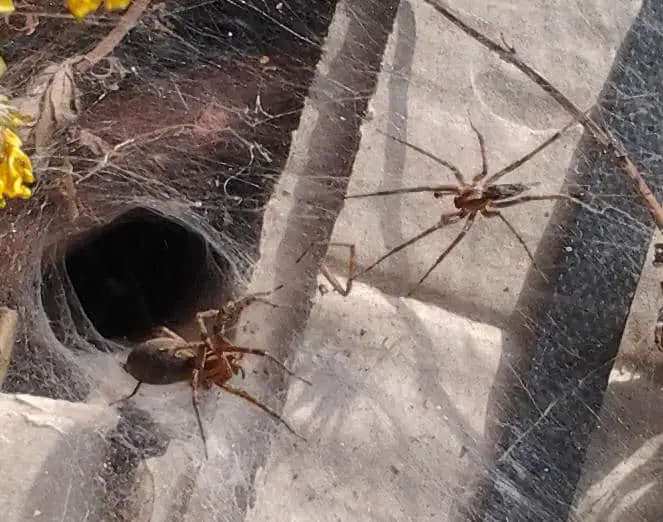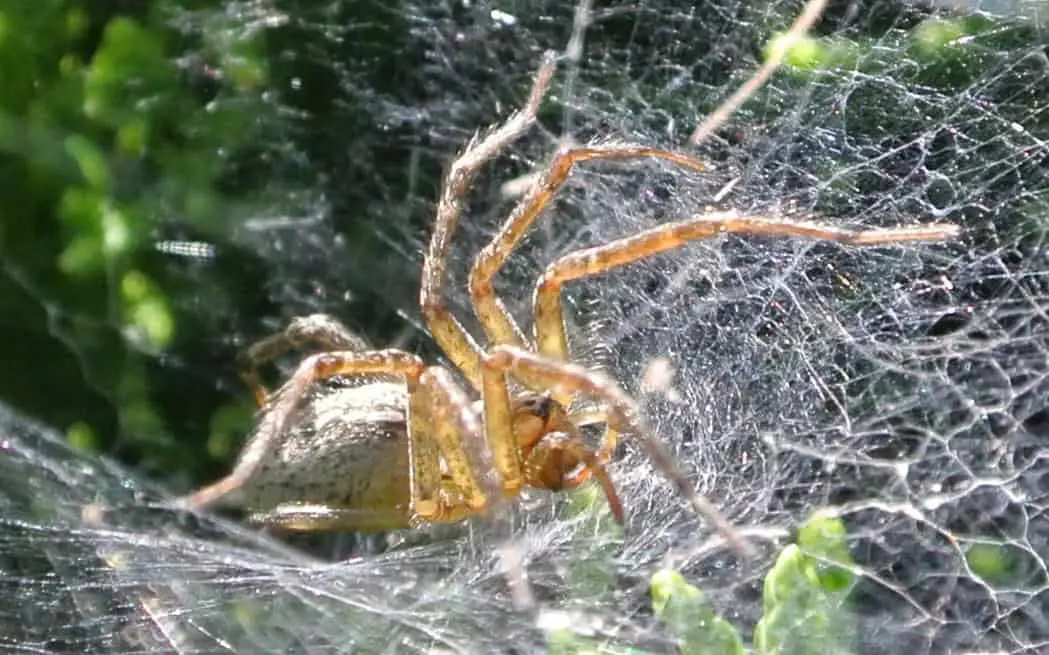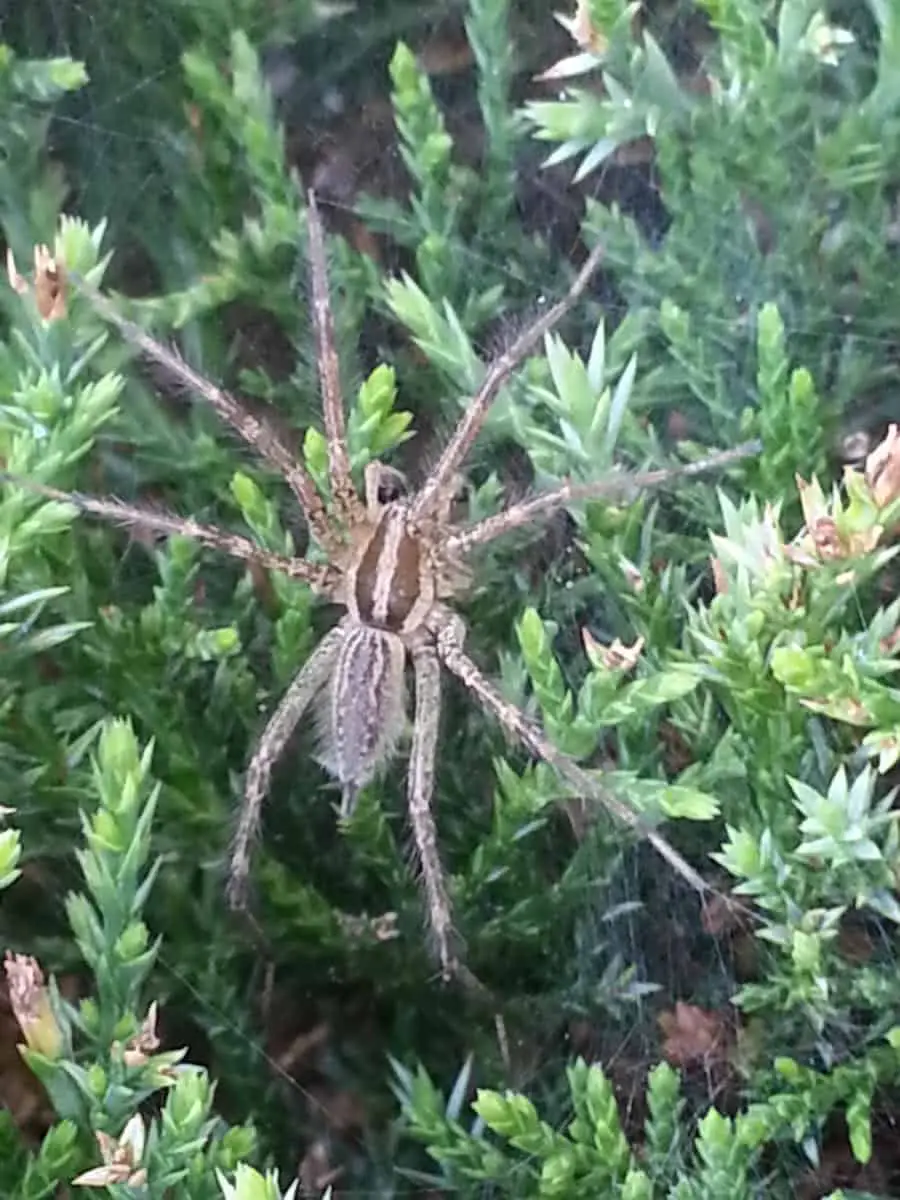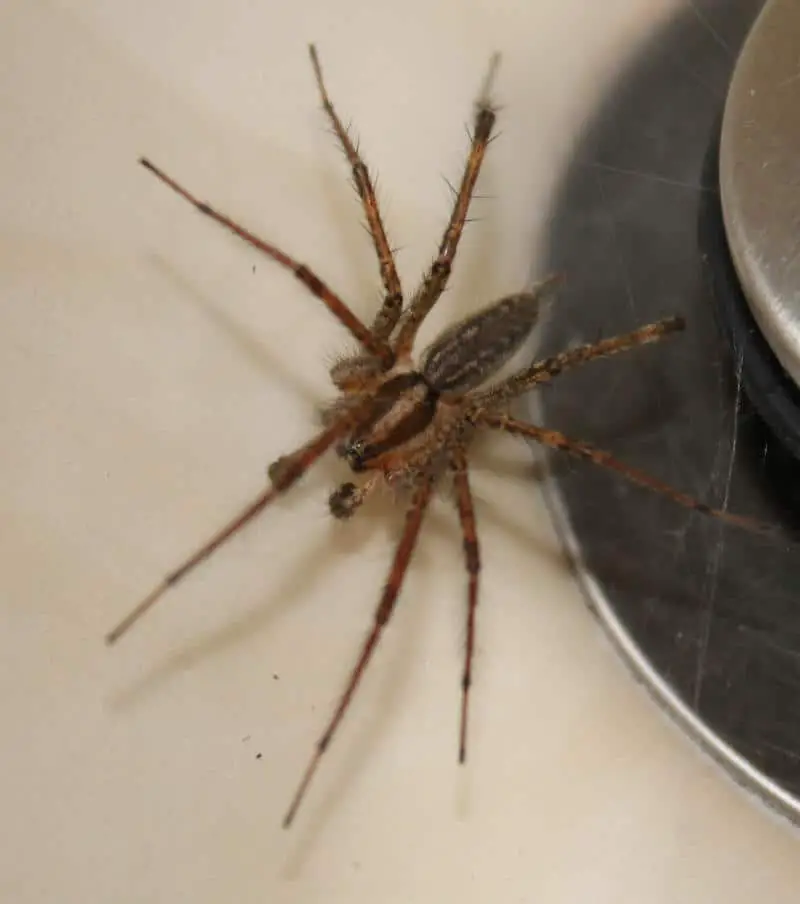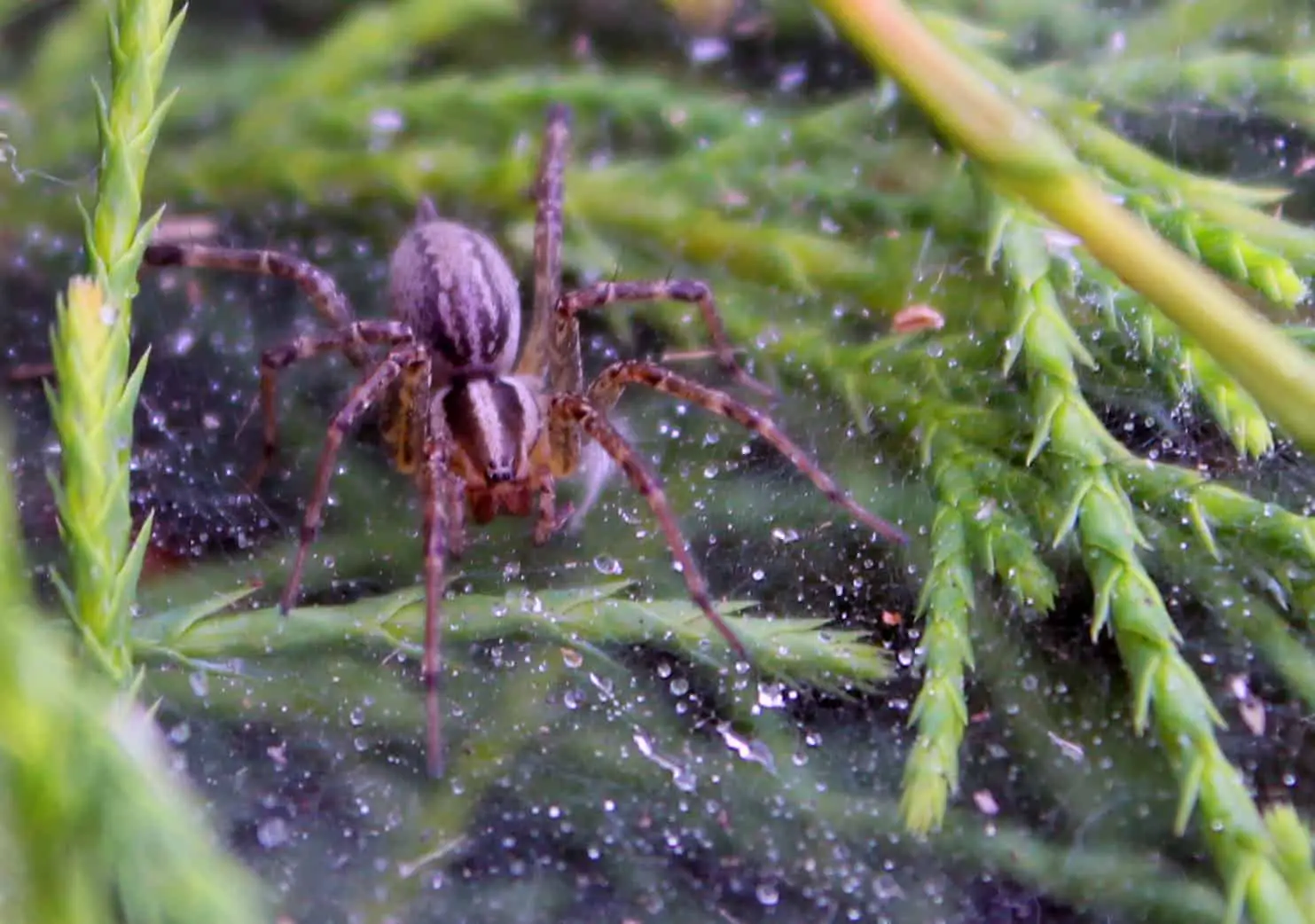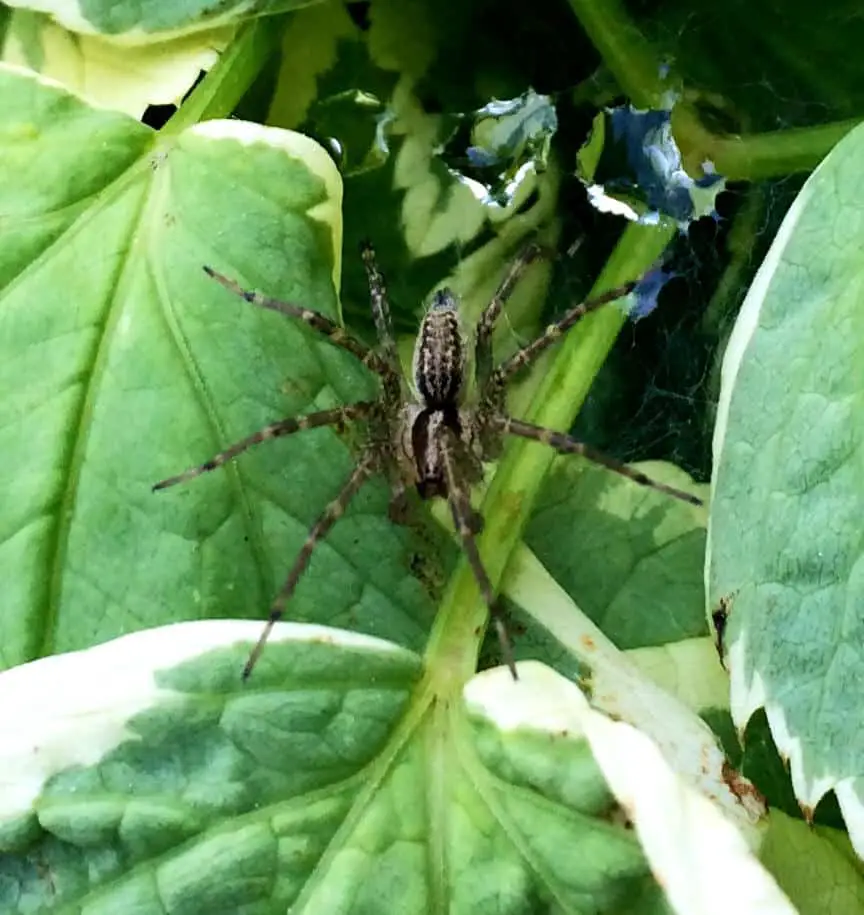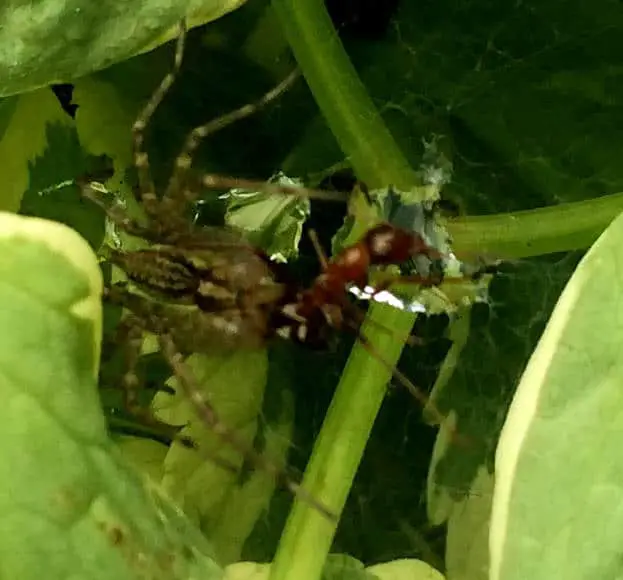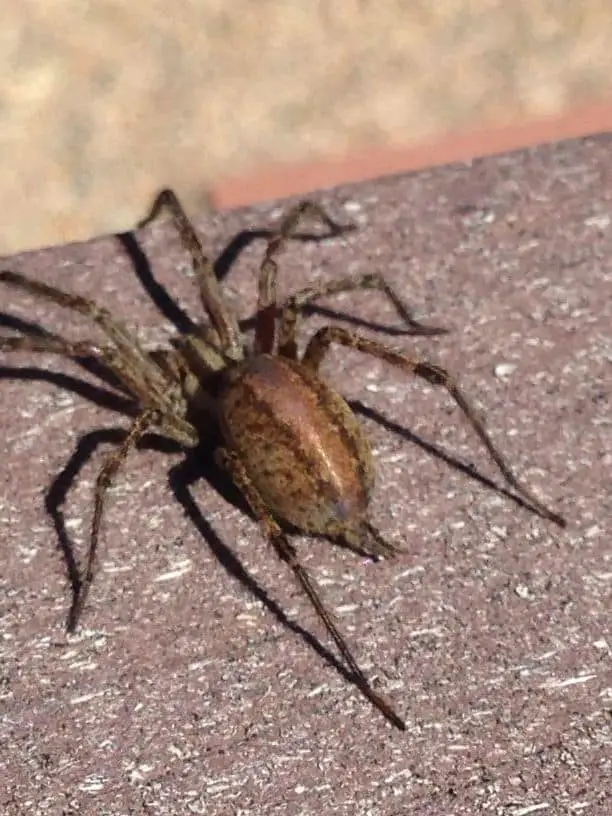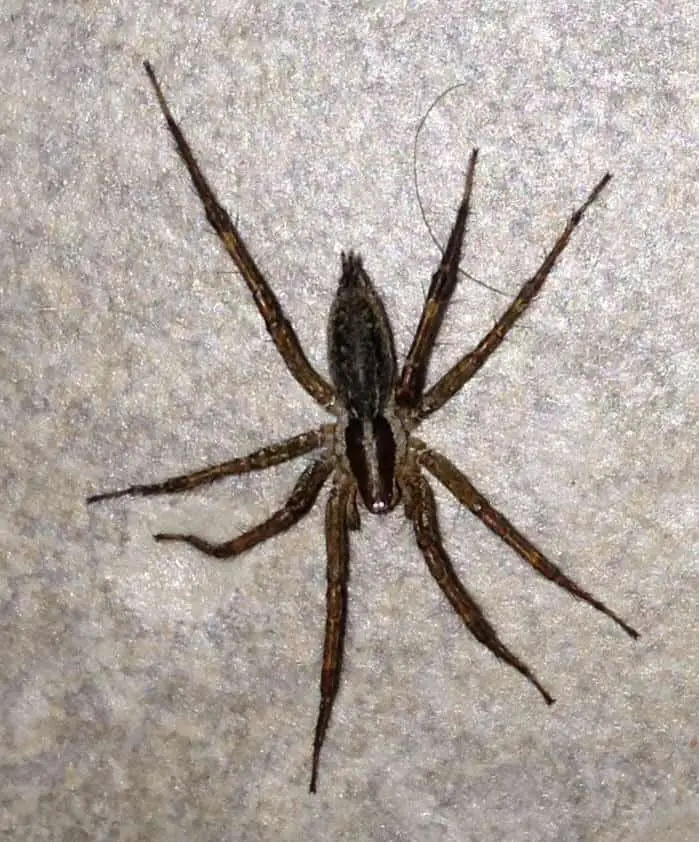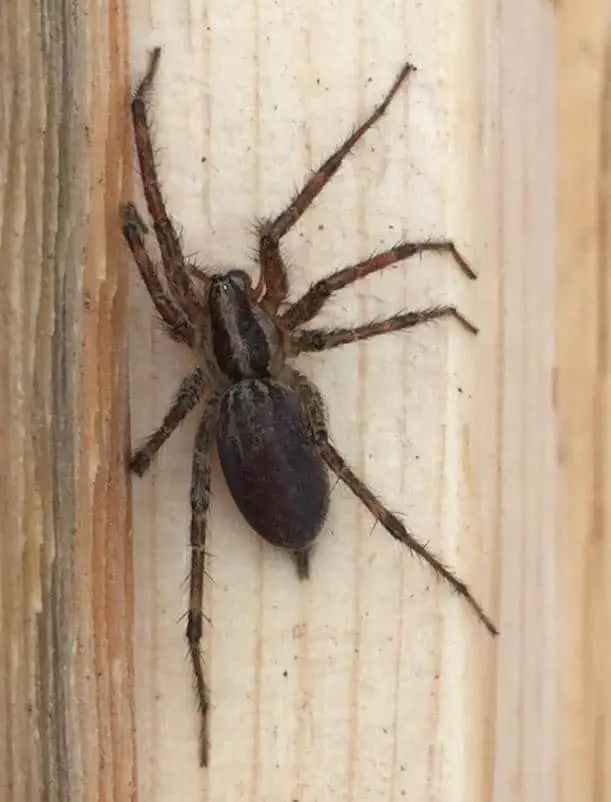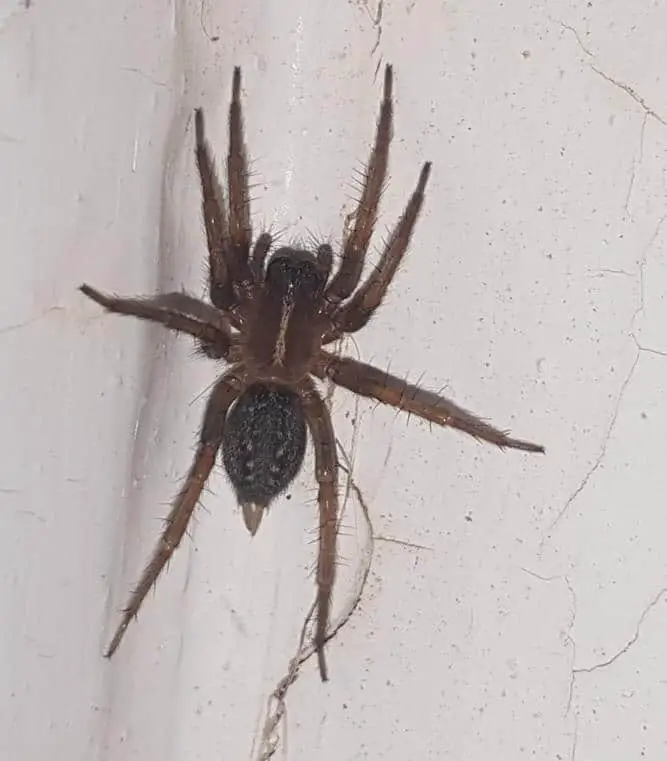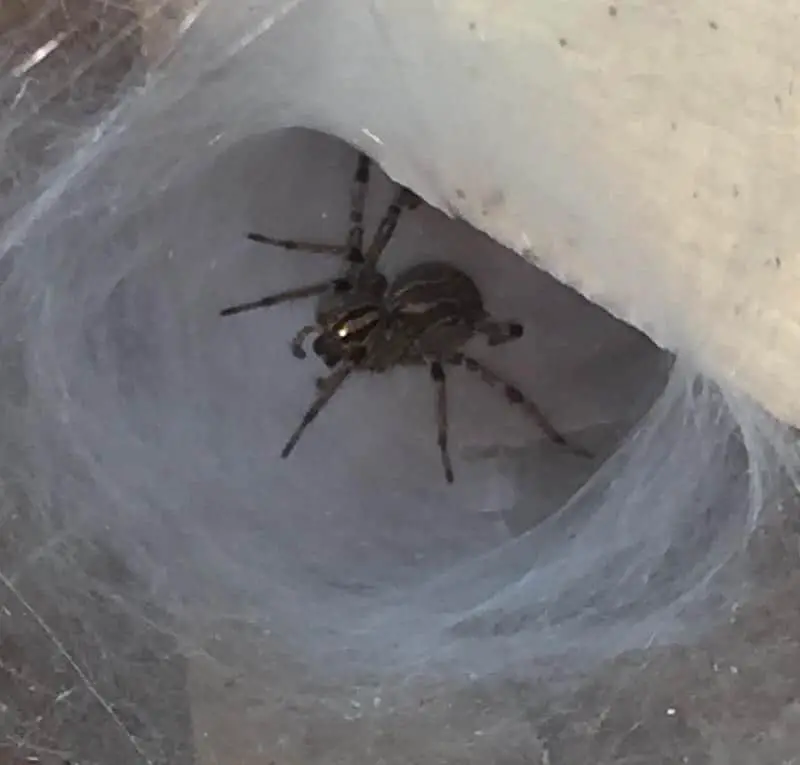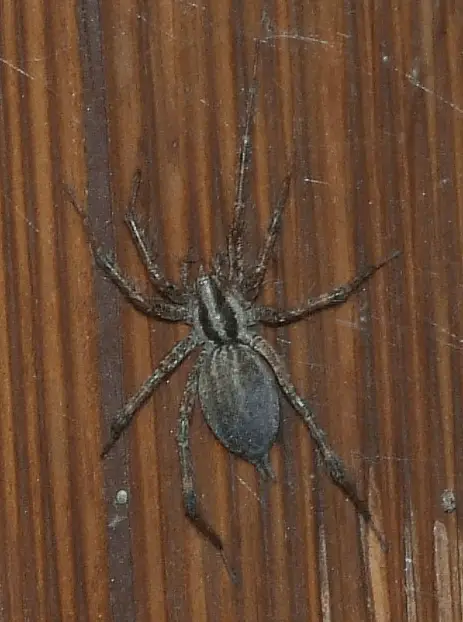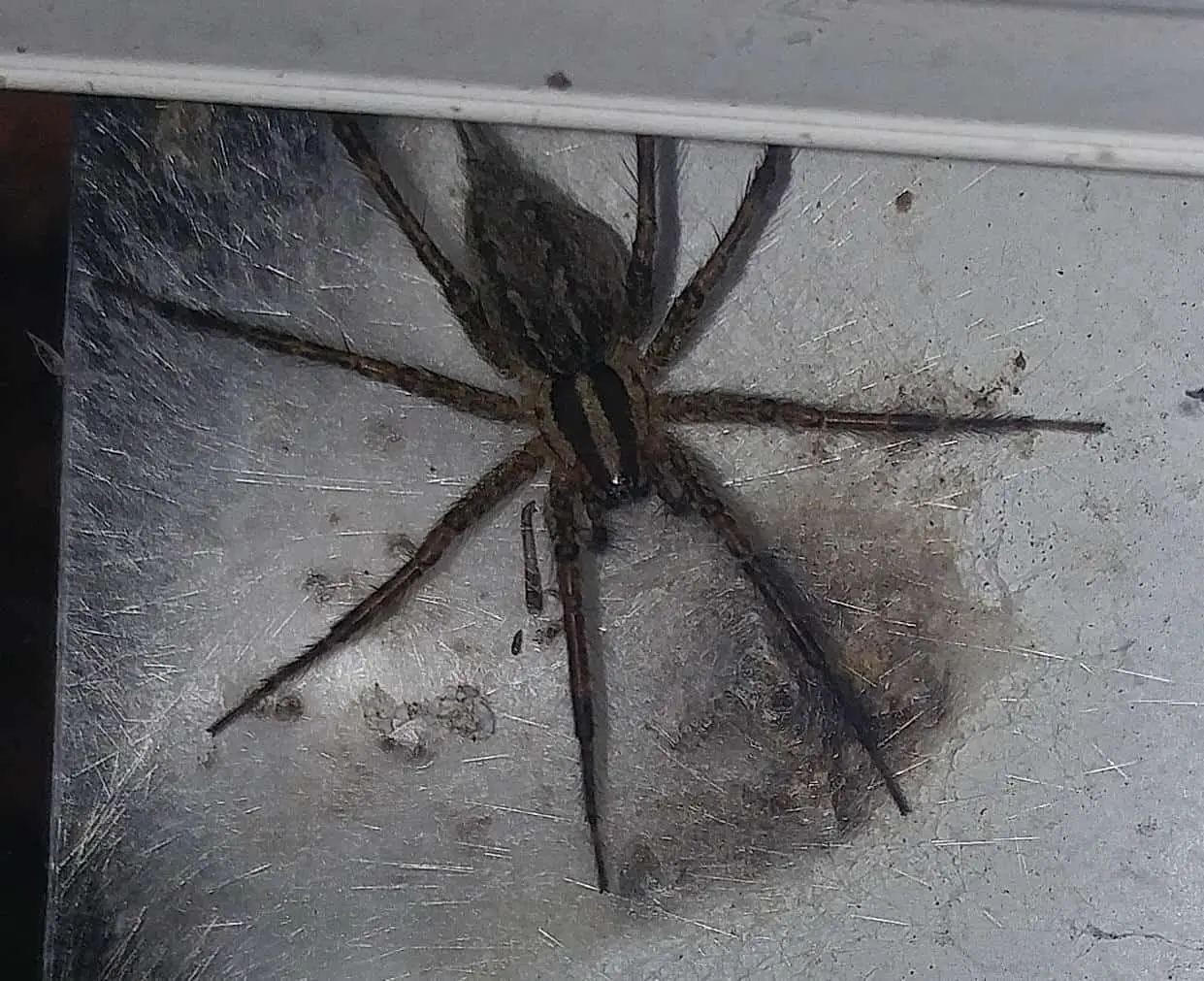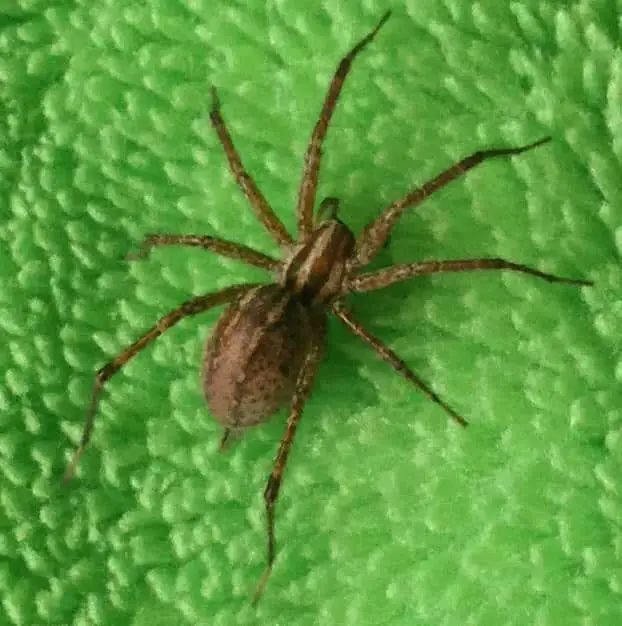Grass Spiders or Funnel weaver spiders (Agelenidae) as they are often called, closely resemble wolf spiders and the males sometimes resemble hobo spiders. They can usually be distinguished from wolf spiders because wolf spiders do not build webs.
Funnel weavers are also usually lighter in build than wolf spiders. Many common funnel weaver are also characterized by having very bristly legs. Most are brown, with gray, black, and tan markings. Like all spiders, funnel weavers have 8 legs, 2 body parts (cephalothorax and abdomen), and no antennae. All spiders in this family have 8 eyes.
They may be recognized by the arrangement of their eight eyes into three rows. The top row has two eyes, the middle row has four eyes, and the bottom row has two eyes (spaced wider than the ones on the top row). They also have two prominent hind spinnerets, and somewhat indistinct bands on their legs. Normally spiders spinnerets cannot be easily seen without turning the spider over but in grass spiders they are quite prominent. The males also have large pedipalps which are prominent. These spiders are commonly called “Grass Spiders” or “Funnel Web Weavers” because they build funnel-shaped webs, which are not sticky, close to the ground.
The spider hides in the narrow end of this funnel, which is usually protected by leaves or rocks. When an insect, spider, or other small creature crosses the wide end of the funnel, the spider feels the vibration and rushes out to grab the prey. Funnel weaver and grass spiders are incredibly quick, and can dash from the protected part of their web to the other end at lightning speed. Funnel weaver and grass spiders are beneficial predators. They very rarely leave their webs, so they don’t often enter homes. They will only bite if provoked, and are not considered dangerous. Their venom is hemotoxic but is much less than severe than the Brown Recluse. The most common symptoms are local swelling, redness and itching.
All photos are copyright to their owners and may not be reproduced without permission.

